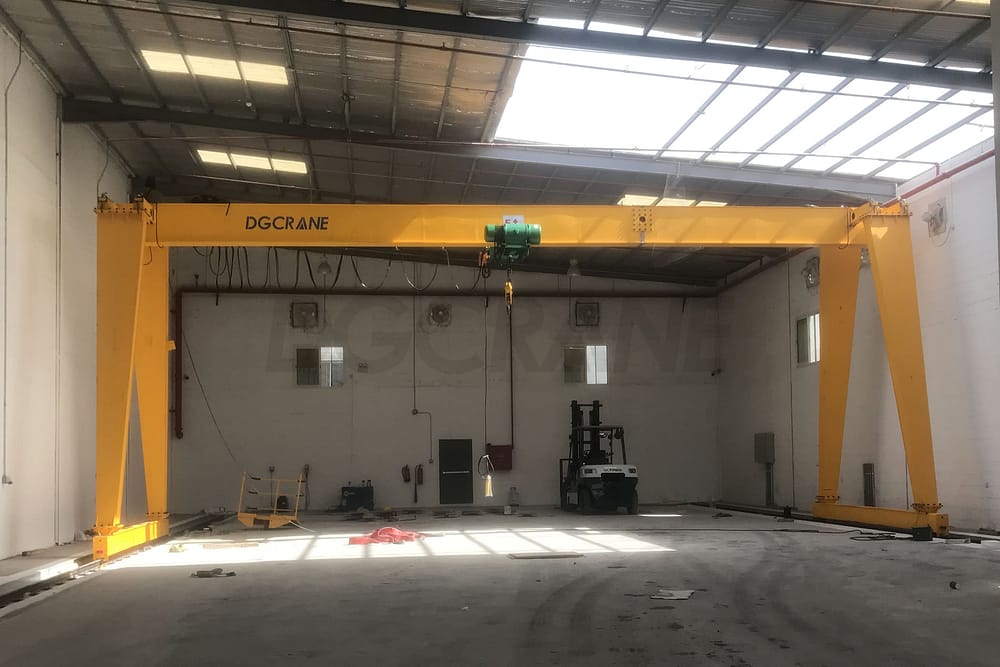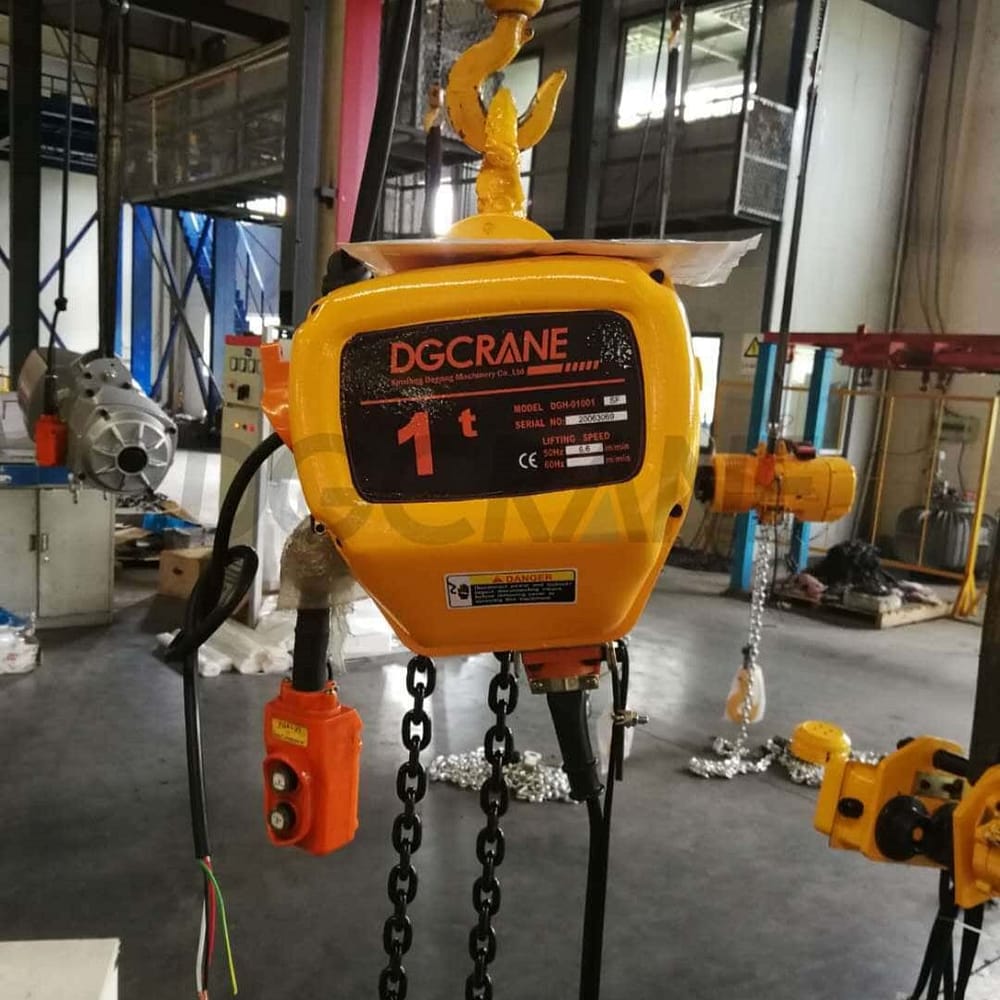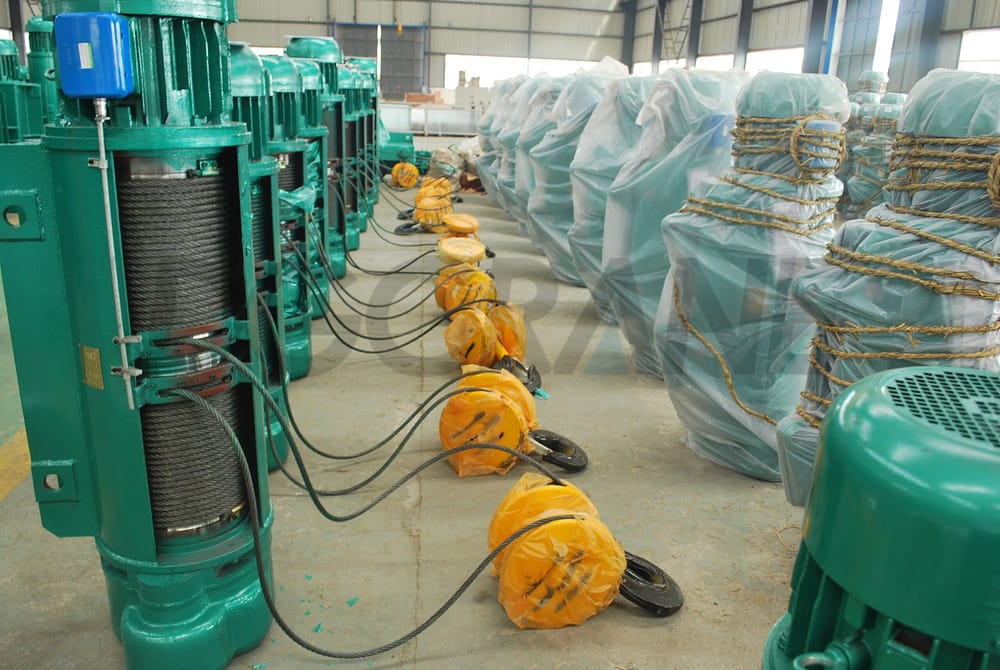Differences Between Electric Chain Hoist And Wire Rope Hoist
In the current market, there are two main types of electric hoists that are widely used: electric chain hoists and wire rope hoists. Depending on different working conditions, you can choose the appropriate electric hoist. This article briefly introduces the differences between electric chain hoists and wire rope hoists for reference.
Size:
When comparing hoists with the same tonnage, electric chain hoists are generally smaller in size compared to wire rope hoists. This is because their structures are different.
Electric chain hoists are driven by chains, and the chain box is separated from the hoist, which overcomes the problem of the wire rope hoist drum being too large. Therefore, electric chain hoists are generally smaller in size than wire rope hoists. As the lifting height increases, the size difference becomes more significant, as the wire rope is wound around the drum, which has a greater impact on the overall size.
Lifting Height:
For wire rope hoists, the wire rope wounding around the drum causes elastic deformation. The side of the drum is with too much pressure, while the corresponding surface with tension. The smaller the drum diameter, the greater the deformation of the wire rope and the greater the pressure and tension on the corresponding surface. To ensure that these forces do not exceed the load-bearing capacity of the wire rope, the drum diameter of the wire rope hoist must be larger, so that the deformation of the wire rope is not excessive.
Design specifications require the drum diameter of electric hoists to be at least 20 times larger than the wire rope diameter. On the other hand, the links in an electric chain hoist are connected through hinges, and the main force it bears is tension. To reduce the compressive strength between the links and the contact surface between the links and the sprocket, electric chain hoists usually have sprockets with 5 or 6 grooves, and sometimes 4 grooves for lighter loads and lifting speeds. Due to these reasons, the sheave on the wire rope hoist’s drum and hook is much larger than the sprocket on the same-sized electric chain hoist. Consequently, the hook spacing of the electric chain hoist is smaller than that of the wire rope hoist of the same specifications.
In other words, on the same height track, an electric chain hoist can achieve a greater lifting height compared to a wire rope hoist.
Travel Distance:
The axis of a wire rope hoist is parallel to the track on which the trolley runs, while the axis of an electric chain hoist can be installed perpendicular to the track.
Therefore, under the same conditions and track length, an electric chain hoist has a longer travel distance than a wire rope hoist. Even if the axis is parallel to the track, the smaller axial dimension of an electric chain hoist allows for a significantly longer travel distance compared to a wire rope hoist. When the lifting height of a wire rope hoist is large, the drum length is also longer, which further affects the travel distance.
Accuracy:
During lifting, a wire rope hoist generates horizontal displacement in the direction of the hoist axis because the wire rope is wound around the drum along the axial direction.
The greater the lifting height, the more times the wire rope wraps around the drum, resulting in the larger horizontal displacement of the hook. On the other hand, an electric chain hoist ensures accurate positioning of the hook along the vertical line of the chain, regardless of the lifting height.
 But many industrial cranes are used with wire rope hoists. So which is better depends on your practical conditions.
But many industrial cranes are used with wire rope hoists. So which is better depends on your practical conditions.
In conclusion:
- Electric chain hoists are significantly smaller in size compared to wire rope hoists, often several times or even dozens of times smaller for the same height.
- Electric chain hoists achieve much greater lifting heights compared to wire rope hoists with the same track height.
- Electric chain hoists have longer travel distances compared to wire rope hoists for the same track length.
- The positioning accuracy of hooks in electric chain hoists is more precise compared to wire rope hoists.
- Electric chain hoists are easier to install than wire rope hoists.
- Electric chain hoists have better performance in handling inclined loads compared to wire rope hoists.
- Electric chain hoists do not experience “slack rope” issues like wire rope hoists, resulting in lower failure rates.
- The mechanical principles used in electric chain hoists extend their service life compared to wire rope hoists.
- Electric chain hoists have a longer lifespan compared to wire rope hoists.
DGCRANE is a specialist in lifting solutions. We manufacture high-quality products. Any questions or needs, contact us!





































































































































